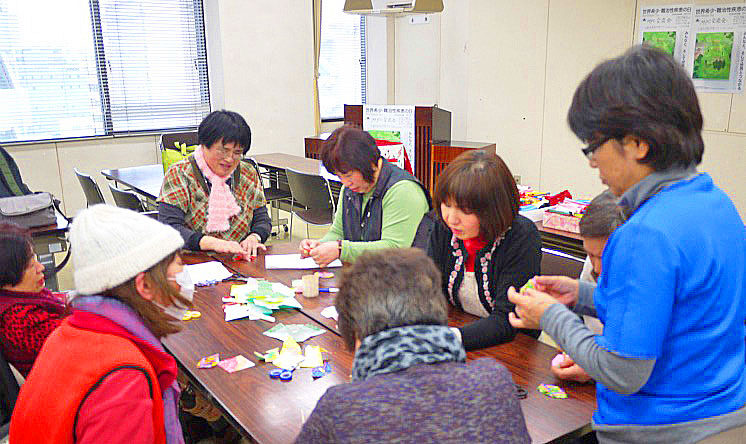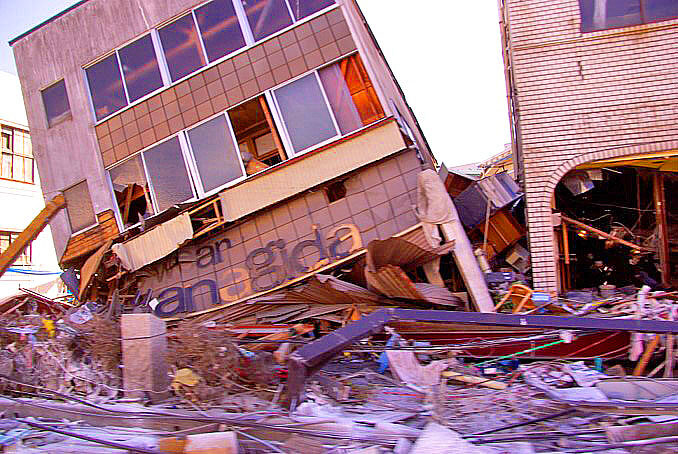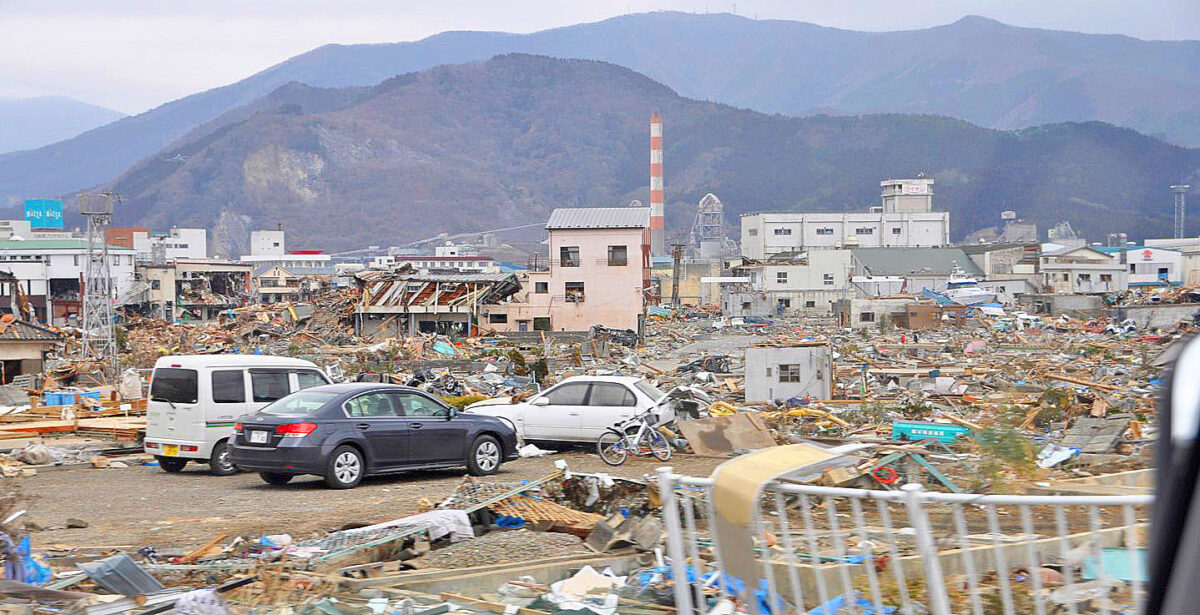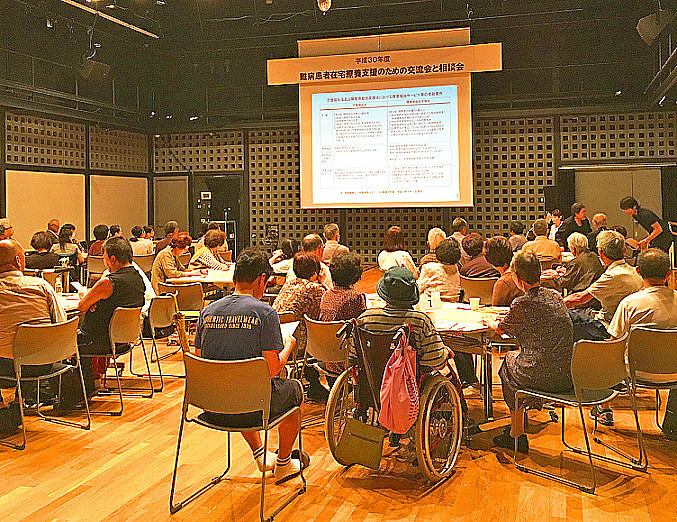Site Patient And Council Works
The Fukushima Prefecture Council of Intractable Disease Organizations,
Ten years have passed since the Great East Japan Earthquake. Looking back on those days, Fukushima Prefecture suffered from radiation damage caused by the nuclear power plant accident that followed the earthquake disaster, and a little later, there was also damage caused by harmful rumors. In addition to food, gasoline and kerosene shortages, hospitals were damaged and pharmacies were closed, making the situation more difficult for patients.
The Fukushima Prefecture Council of Intractable Disease Organizations was unable to conduct activities as expected due to the earthquake and each member association had to deal with situations on a case-by-case basis. Many of our members evacuated to other areas and some patient associations were forced to exempt membership fees.
Major Patient Groups’ Responses
The Fukushima Kidney Disease Council distributed a flyer 10 times between March and May 2011 titled “For Dialysis Patients in Fukushima Prefecture” as a response to the immediate aftermath of the earthquake. It was distributed not only to members but also to all approximately 5,000 dialysis patients. On March 24, a written request was submitted to the prefectural government’s Regional Medical Division and Disaster Countermeasures Headquarters regarding the “resolution of gasoline shortages”. In addition, up until July 15, we submitted six written requests for patients in evacuation centers concerning, “dialysis treatment”, “dietary guidance and nutrition”, “ensuring hospital visits for patients” and “the reopening of dialysis facilities in Minamisoma.” We explained our requests to each faction of the prefectural assembly and the mass media. Conversely we confirmed a request to the prefectural governor to dispatch the Self-Defense Forces for water supply through the Diet members elected here. In terms of individual responses, we consulted with dialysis patients who had been evacuated and introduced them to facilities in the prefecture where dialysis treatment was available.
The Japan ALS (Amyotrophic lateral sclerosis) Association Fukushima Branch received instructions from the Tokyo Secretariat to confirm the safety of its members, and the Branch Director and Vice Director split up to confirm the safety of the officers. The next step was to confirm the safety of the members, but the attempt was abandoned because the phones were disconnected. After that, they applied for membership fee waiver to the head office.
At the Japan Rheumatism Friendship Association Fukushima office, the officers discussed consultation cases received from evacuees in and outside the prefecture with the branch heads of each prefecture and associates. They also referred rheumatologists and passed on information from local members in evacuation areas to those affected. The Rheumatism Association Network was very helpful with these activities.
Patients’ Association for Collagen Vascular Diseases Japan
The Fukushima branch of the Patients’ Association for Collagen Vascular Diseases Japan first confirmed the safety of its members and patients. Since the usual medications were not available, the head office explained how to tak e medications (such as steroids) in times of disaster and published it in the 2011 extra issue of the head office’s journal, “Collagen”. This later led to the issuance of the Emergency Medical Assistance Handbook from the “Collagen Disease Handbook” (a handbook in which symptoms and other information can be noted and understood in the event of unconsciousness).
After the earthquake, other than patient group members, about 165,000 people evacuated by May 2012 from Fukushima Prefecture, and 42,000 people as of July 2019 have not returned. 10,000 evacuated in the prefecture and 31,000 outside. Even now, those in the hard-to-return zone are unable to return to their homes.
Yoshihiro Watanabe, The former president, The Fukushima Prefecture Council of Intractable Disease Organizations,
My Tour Impressions
It has been about 10 years since the Great East Japan Earthquake. Many people suffered damage from the earthquake, tsunami, and nuclear power plant accident. Reconstruction is proceeding at a rapid pace, but life cannot completely return to the way it was before the disaster. In the areas damaged by the nuclear power plant, the number of flexible container packs (bags containing contaminated soil) that were scattered in the area during the annual inspection, has gradually decreased. As usual, large dump trucks are still running to transport the contaminated soil from the area to the interim storage facility, but I think it will take a few more years to complete. However, note that it is an interim storage facility, not a final disposal site.
Ten years on, the problem of how to permanently dispose of the contaminated soil in the interim storage facilities and contaminated water at the plant site have not yet been resolved. Of course, the nuclear power plants themselves have yet to be restarted. At the very least, they need to solve the Fukushima problem before the restart. I am aware that no nuclear power plant in operation is 100% safe. But we must never create a second Fukushima disaster.
Finally, I would like to thank the people of the JPA for organizing the “Fukushima Tours,” the people of Iwate and Miyagi Prefectures’ Federation of Intractable Diseases, and the people who participated with us. Thank you very much.
Yoshihiro Watanabe
Efforts of MPC (Miyagi Patient Council) in the aftermath of the Great East Japan Earthquake
Nine and a half years have passed since the tragic event, and although the scene is a vivid memory that we cannot forget, we did not have time to “record” our actions. In the first place, our activities were not organized, MPC officers and member organizations were selflessly doing what each of them felt was important. We therefore, retraced our actions and tried to remember what we managed in our record-keeping efforts.
After 10 days of trying to rebuild the lives of people in my office (those with severe disabilities) and securing supplies, I finally began visiting MPC members with incurable and chronic illnesses and their families. Some of the member organizations, such as the Miyagi Prefecture Kidney Disease Patients Council, were providing support from a national level. We decided to visit small organizations one after another to ascertain their safety situation and to bring supplies we had obtained. We also made a list of people who were personal friends or acquaintances of theirs and who lived in the affected areas. Some people were safe but 30 people required attention.
We began to visit the affected coastal areas of Miyagi Prefecture in order, starting with Kesennuma. We learned that five people had died as a result of being engulfed by the tsunami and five families were unable to live in their homes due to the damage. We also confirmed that the rest of the people were safe, but suffered great emotional shock due to the situation. They were anxious about their lives at home, so we wanted to support and comfort them. First, we concentrated on continuously sending relief supplies mainly to the five affected families, all of whom had their homes damaged but were unable to live in shelters. Some of them were living in very dangerous buildings, and others their homes were safe but their lifelines were cut off. Of course the living conditions represented a great inconvenience for everyone, but unfortunately some neighbors harbored resentment towards others as they couldn’t understand why those that suffered from Nanbyo conditions were receiving additional and expeditious support.
What people that remained in their homes had in common was, wether or not they were afflicted, they felt forgotten because they were not in shelters and therefore did not receive information or supplies. We were told that the supplies would be shared with these people, and we tried to distribute as many as possible. Weekly, we tried to deliver supplies and check on the condition of five people that had serious conditions.
I keenly felt that everyone in the community cherished the relationships between each other and those supporting them. Unlike Sendai City, Ishinomaki City (2 locations), Shichigahama Town, Natori City, and Watari Town where systems and resources were weak even before the earthquake.
Support for medical visits, medication, and environmental maintenance specific to intractable and chronic illnesses was an afterthought. I once encountered a public health nurse who was dispatched from another prefecture and assigned as the person in charge, but was unable to do research and ended up making only cursory visits. I cannot blame the public health nurse, but the needs of the patients were never made known.
In terms of assistance other than supplies, for restorative reasons, we brought those who were living alone to Sendai. But it was difficult for some as they were unable to leave their homes even for just a few days. And others wanted to bring their families as well.
The center’s counselors at the time, loaded their belongings on the back of their bicycles and headed out to confirm the safety of people, among other activities.
MPC is currently working with the Sendai City Pharmaceutical Association to develop an individual disaster support plan and the networking that will accompany it.
Hiroshi Shirae, NPO Miyagi Patient Council
Ten years have passed since the Great East Japan Earthquake. Even now, in the midst of my daily life, I experience mental and even physical hardship when I think of that day. But thankfully we have received a great deal of support from the counselors at the Miyagi Consultation and Support Center for Intractable Diseases and from the member organizations that worked together with MPC.
Akemi Suzuki, Multiple Sclerosis, Ishinomaki

Initiatives of the Iwate Prefecture Council of Intractable Diseases and Related Disorders and the Intractable Disease Consultation and Support Center
1. Immediately after the earthquake, March 2011~.
The Iwate Prefecture Council of Intractable Diseases and Related Disorders was among the first to begin its activities, but the situation in the affected areas was not well understood due to the lack of phone service and the accessibility. Under these circumstances, we finally started to enter the area after March 20, we then provided emergency transportation of kerosene and daily commodities, mainly to evacuation centers.
We also struggled to confirm the safety of our members, as the municipal offices and public health centers were inoperable.
Initially, the evacuation center was also home to physically disabled people and patients with intractable diseases, but many of them had difficulty living in groups and moved in with acquaintances or made other arrangements.
Satellite phones and other equipment were hastily deployed, but calls from the site were limited to 30 seconds per person, making it difficult to communicate at will.
By early April, information gradually reached the Intractable Disease Support Center, and support was expanded to include medical care for those who were stricken, hospital transportation, and replenishment of medicines.
Also in April, support expanded nationwide, and large quantities of relief supplies were delivered to the Iwate Prefectural Government and other organizations, which provided support and transport to evacuation centers in cooperation with Iwate Prefecture and volunteer organizations.
By late April, the information network had improved, and requests for daily necessities were received from individual patients. Since courier companies did not deliver bulky items such as bedding, we made efforts to deliver and consult with them directly, usually two to three times a month.
The Iwate Prefecture Council of Intractable Diseases received a large number of donations, totaling approximately 4 million yen. We would like to express our sincere gratitude to a total of seven organizations and 27 individuals, including the National Council of Facilities for the Disabled, Aichi Intractable Disease Relief Foundation, Jiangsu Province Performing Arts Group Charity Performance in China, and each prefectural federation of intractable diseases. On behalf of their charitable contributions, we delivered donations to the families of the deceased and other victims of the disaster.
In October, a safety confirmation survey was conducted through various organizations, which revealed that 11 members had died, and 126 had suffered damage to their homes. According to a subsequent survey by Iwate Prefecture, there were 37 people in the coastal areas who lost their medical expense beneficiary certificates after the earthquake.
A relative of one of the deceased, a wheelchair-bound man with muscular dystrophy, contacted us around the third week after the disaster. His parents and him were evacuating because of the disaster but all three members were killed in the tsunami and fire. “We found corpses that we believe to be theirs, but it is difficult to identify, so it was left to DNA analysis and confirmation. There were no photographs available for the funeral. Do you have any photos that can be used as a portrait of the deceased?” the relative asked. But they said that they lost albums full of memories in the tsunami, and were driven by fear and anxiety as if all of their memories had been taken from them. A little over a month after the disaster, the autopsy results were confirmed, and a funeral service was held. At the altar, a smiling portrait of the deceased, based on a snapshot taken a year earlier when the father and son had participated in a Patients’ Association event, was placed on the altar and laid to rest.
In an inland residential area, because of the power and water outages caused by the earthquake, people evacuated to a local community center and started cooking together. However, elderly people who lived alone, people with disabilities and their families, did not evacuate to the community center. They did not evacuate and participate, because they were reluctant to burden or inconvenience others and lacked the confidence to live in a hastily prepared place.
Afterwards, there was prejudice and belittling of the families who did not evacuate to that meeting place, and some said they were troubled by the lack of understanding of people with disabilities.
One of the participants said, “Those of us who escaped from the disaster, even if we are physically disabled, we are ‘given life’ and will try to live it to the fullest”.
2. Issues that were identified
- Challenges in Preparedness
-
Iwate Prefecture has been working for several years to create manuals to support those in need of assistance and for patients with intractable diseases, but these manuals have not actually been distributed to municipalities, and the support system for the physically disabled and patients with intractable diseases has been insufficient.
Because of the overly protective Privacy Act, the support was inadequate for patients with intractable diseases, which could not be handled by the individual or his/her family alone.
There is a motto: “Tsunami Tendenko”. It means, if a tsunami strikes, don’t worry if your family is not with you, just run to high ground in a group and save your own life first. However, the situation regarding the evacuation of physically disabled people and patients with intractable diseases who have difficulty evacuating on their own must be further examined.
There were also reported cases where evacuation was difficult due to the loss of designated evacuation centers and disruption of evacuation routes. The evacuation centers, such as school gymnasiums located on higher ground, were overcrowded with people. Of course, they were not barrier-free, and there were inadequate wheelchair-accessible restrooms. Each municipality has not provided facilities and equipment that can accommodate the vulnerable.
- Healthcare System Challenges
-
Most of the medical facilities were swept away, and some of the evacuees became ill or developed diseases during their evacuation and died in shelters.
On the other hand, many lives were saved through the coordinated actions of inland medical institutions. Helicopter transport support by the Self-Defense Forces also took place.
Because the kidney dialysis patients were unable to travel, combined with the death of their family doctor, an emergency request was made to Iwate Prefecture, which led to the utilization of a dialysis hospital.
- Livelihood Support Issues
-
Temporary housing was constructed for the evacuees after a long period of inconvenient shelter life. The temporary housing was cramped and not barrier-free. Even though the housing was intended to be temporary, it was built in an inconvenient location, making it difficult for people with intractable diseases and physical disabilities to live there. If they evacuated to private homes, no relief supplies were distributed.

In December following the earthquake, survivors responded to a questionnaire. From these questionnaires, the actual damage caused by the earthquake and tsunami were gradually revealed.
Questionnaire Survey of Patients with Intractable Diseases Affected by the Great East Japan Earthquake and Tsunami (Survey Report by the Iwate Federation of Intractable Diseases)
(December 2011)
The Iwate Federation of Intractable Diseases conducted a survey of 115 members affected by the disaster and received responses from 108 (94%). The responses are as follows.
- Situation of disaster
-
- Totally destroyed home 59
- Half destroyed home 12
- Flooded home 7
- Loss of major household items 13
- Loss of family members 7
- Loss of cars 5
- Physical condition at the time of the disaster
-
- Suffered illness 32
- Immobilized 3
- Other ailments 15
- Sleep depravation 39
- Hospitalization 12
- Unaffected 28
- Living Location as of December 2011
-
- Primary home 42
- Relatives’ home 5
- Acquaintance’s home 4
- Temporary housing 37
- Hospital 12
- Other 6
- Troubles encountered during the disaster (multiple responses)
-
- Lack of medical equipment availability 9
- Could not contact hospitals 15
- No gasoline 51
- No water 48
- No electricity 79
- No gas 25
- No medical oxygen 2
- Cramped evacuation shelters 35
- Lack of medicine 24
- Insufficient food 34
- No kerosene 20
- Telephones inoperable 76
- Current situation and feelings
-
- I am so grateful for the support I have received from so many people.
- Due to the gravel pavement, walking is very difficult amongst the temporary housing. I am worried about the condition of my feet.
- A family member with an incurable disease was swept away by the tsunami and they have not been found.
- I can no longer hope for support.
- Requests for support
-
- We would like to see the future development of disaster-resistant lifelines.
- The temporary housing should be designed with consideration for the elderly, disabled, and patients with intractable diseases (gravel roads make it difficult to use wheelchairs).
- Desire to live in my original home.
- Need for Stoma/self-urinating patients, care facilities, especially due to the lack of running water.
- Help for adjusting to communal living.
- Lessons Learned from the Disaster Experience
-
- Prepare a contact memo with medications, family doctors, etc. (The Iwate Federation of Intractable Diseases had prepared an “Emergency Medical Handbook,” (distribution next fiscal year).
- Always ensure adequate footwear is available and evacuate immediately.
- Prepare an emergency kit.
- Prepare emergency supplies and stockpile food, water, etc.
- Build good relationships and cooperate with neighbors on a regular basis.
- Concerns about life now and in the future
-
- I am concerned about my health condition.
- I am concerned about my financial situation.
- Vague anxiety about the future.
- Hope to have better medical facilities, considering that it is inconvenient and difficult to go to the hospital.
- Want to live positively without inconveniencing family members.
- Concerned about the health of our families, especially caring for our parents.
- Worried about employment and my job.
- Questionnaire results observations
-
Despite being affected by an unprecedented disaster, many survivors expressed gratitude for the relief efforts. We would like to thank those who responded to our survey, especially those who have lost family members and are living in evacuation shelters. All survivors are living witnesses who will pass their stories on to future generations. Our goal was not to be judgmental. We hope that the results of the survey will give you an insight into the real situation and feelings of the victims of the Great East Japan Earthquake. That is our sincere wish.

3. Keeping the Disaster Top of Mind (1) March-November 2012
It was early March, a year after the earthquake. Despite a snowstorm, eight Mongolian exchange students from Iwate University and 17 staff members from the secretariat visited temporary housing in Kashinai, Miyako City. In addition to delivering relief supplies such as clothing and daily necessities, we served Mongolian food, yakisoba, and amazake to the residents, who were delighted with the food.
In the afternoon, a “matouqin” concert by NAGISA, a native of Morioka who is active in Korea, was also held at the Miyako Workstation hall. The nostalgic sound of the matouqin echoed through the hall like the wind crossing a wide, wide prairie.
In mid-April, we interviewed 24 members of the Iwate Kidney Disease Association (hereafter referred to as “KDA”) in Miyako City about the disaster situation and their medical treatment afterwards.
The exchange meeting began with a talk by the executive director of the KDA, who is located inland. He was visiting the disaster area along the coast for the first time. He said he was speechless at the scale of the disaster he had witnessed. At first, the participants did not say much, perhaps because of the pain of the devastation. Gradually, however, they discussed their problems. One unique example was that they were served bananas for breakfast at an elementary school evacuation site. Due to their ailments, they couldn’t eat the bananas due to the high potassium content. By the end of the meeting, members commented that they appreciated the leisurely lunch and teatime since there had been a long absence for such an opportunity and it was gratifying to see one another safe and sound.
Food and clothing from “Safety Iwate” was delivered directly by the Federation.
4. Keeping the Disaster Top of Mind (2) July-November 2014
The “Exchange and Consultation Meeting for Support of In-Home Treatment” was held jointly with 13 coastal municipalities to publicize the “Services and Supports for Persons with Disabilities Act”.
The motivation for holding the event was based on requests to “hear directly from patients with intractable diseases” and “hold an exchange meeting at the municipal level,” as well as a strong desire to “keep the disaster top of mind”.
The Health and National Health Insurance Section of the Iwate Prefectural Health and Welfare Department sent out information to 2044 recipient card holders covering specific diseases. Of which, 129 attended the meeting.
The recovery has been slow, and the people in all of these areas have been struggling with illness and life in general, but are trying their best to move forward. As they warmly exchanged information, a few participants noted “I am happy to see you all” and “We hope you will come again next year”.
5. May the “Poem of Life” Reach My Deceased Friend.
Mr. Sawayama, who has a neurological intractable disease, spinocerebellar degeneration, and who has been creating poetry and self-publishing his works, lost his best friend who had muscular dystrophy in the earthquake disaster. His friend had been working on a picture book. He illustrated Mr. Sawayama’s stories and co-authored and self-published two picture books between 2006 and 2008.
After the earthquake, Mr. Sawayama spent many days in a state of depression upon hearing the news of his best friend’s death. Nevertheless, this did not stop him from creating.
He produced about 30 works, including poems addressed to his late friend.
Until then, his style had been characterized by a casual, unobtrusive depiction of everyday life, but after the disaster, “I began to think more about the weight of life.” Although he no longer had his close friend who drew illustrations for him, he would like to continue to express what he feels in his poems.
I couldn’t do anything…
What a shame…
You’re not here anymore!
When the cherry blossoms bloom
Do you remember
The sky that day
The wind and clouds
Cherry blossom petals floating in the wind
I watched it all alone
With a passion in my heart
My dearest friend
It’s time to say goodbye
To each our own paths
I’m walking out
Good luck
I’m rooting for you
Every time I pass by a row of cherry trees
You smiled as brightly as the sun
Your kindness
When the cherry blossoms bloom
Always… always… always…
The sky is the color of cherry blossoms
When the cherry blossoms bloom
6. The Present
The Iwate Prefecture Council of Intractable Diseases and Related Disorder continues to co-host the “Exchange and Consultation Meetings for Home Care Support” with municipal welfare service departments and area health centers.
Participants commented that they were glad they had the courage to join. There are many patients living in the same community who do not disclose that they have an intractable disease. The municipal welfare service section also commented, “We didn’t know there were so many people with intractable diseases in our municipality,” and “It was good to hear directly from them about their requests. We hope that the event will provide an opportunity for those in charge to get directly involved with patients with intractable diseases and support their home care.
From this disaster, we have realized more issues that need to be addressed, but we understand there is still a long road ahead to solving them. We would like to repeatedly appeal to the prefectural and municipal governments regarding the need to establish welfare evacuation centers and improve their functions.
Because intractable diseases can affect anyone, it is essential to have a connection with the local community so that people close to you can understand your condition and help you recuperate.
We hope to continue this activity in the future.

Exchange and consultation meetings to support home care for patients with intractable diseases



